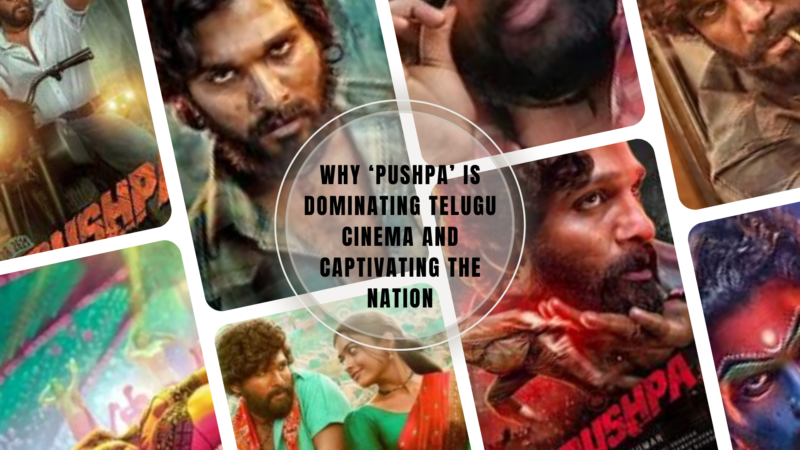How ‘Sairat’ Revolutionized Indian Storytelling
Marathi cinema has always been an important part of the Indian film industry. It often explores rich narratives and cultural nuances unique to Maharashtra. However, the 2016 film Sairat, directed by Nagraj Manjule, marked a pivotal moment not just for Marathi cinema but for Indian storytelling as a whole. This article will explore how Sairat revolutionized Indian cinema. We will focus on its narrative style, themes, and its impact on audiences and filmmakers alike.
The Story of Sairat
Sairat tells the poignant love story of two teenagers, Archi (played by Rinku Rajguru) and Parshya (played by Akash Thosar). They come from different castes. Their romance unfolds against the backdrop of a caste-ridden society in rural Maharashtra. This setting highlights the harsh realities of love and societal restrictions. The film’s title, which translates to “wild,” aptly captures the passionate yet tumultuous nature of their relationship.
One of the most striking aspects of Sairat is its unflinching portrayal of caste dynamics. Unlike traditional Bollywood films, Sairat delves deep into the harsh realities faced by lovers from different backgrounds. It does not shy away from showing the struggles they endure. This raw and realistic approach resonates with audiences, making the film a groundbreaking addition to Indian cinema.
Narrative Techniques and Cinematic Style
Sairat employs innovative storytelling techniques that set it apart from its predecessors. It combines elements of romance, tragedy, and social commentary. This blend offers a holistic view of its characters’ struggles. The use of local dialects adds authenticity, allowing viewers to connect more deeply with the narrative.
Furthermore, the cinematography by Sudhakar Reddy provides breathtaking visuals of Maharashtra’s landscapes. This contrast between the beauty of nature and the harshness of societal constraints enhances the film’s impact. The soundtrack, composed by Ajay-Atul, blends traditional and contemporary sounds. This musical fusion enriches the emotional depth of the film. The hauntingly beautiful song “Zingaat” became a cultural phenomenon, further cementing Sairat‘s influence.
Breaking Caste Barriers
One of Sairat‘s most revolutionary aspects is its fearless engagement with the issue of caste. The film tells a love story while critiquing the caste system that continues to plague Indian society. By showcasing the consequences of inter-caste love—betrayal, violence, and tragedy—Sairat challenges audiences to reflect on their own beliefs and biases.
Moreover, the film’s ending is both tragic and thought-provoking. It leaves viewers questioning the societal norms that dictate personal relationships. This willingness to confront uncomfortable truths has opened the door for other filmmakers to explore similar themes. Consequently, this enriches Indian cinema as a whole.
A New Era for Marathi Cinema
The success of Sairat has had far-reaching consequences for Marathi cinema. It proved that regional films could achieve pan-Indian appeal, grossing over ₹100 crores (approximately $14 million) at the box office. This financial success has encouraged producers to invest in more ambitious projects. As a result, filmmakers can now explore diverse narratives and experiment with different styles.
In the wake of Sairat, a new wave of Marathi films has emerged. These films focus on socio-political themes and challenge societal norms. Movies like Court (2014) and The Disciple (2020) have garnered critical acclaim and international recognition. The film industry is now more open to exploring stories that reflect the complexities of contemporary life, paving the way for a richer cinematic landscape.
Impact on Indian Cinema
Sairat has also influenced mainstream Indian cinema. It challenges traditional formulas often used in Bollywood films. Its success has led to a surge in interest in regional storytelling. Consequently, Bollywood filmmakers are inspired to incorporate themes and narratives reflective of local cultures and issues. Films like Kabir Singh and Panga have started to explore deeper social issues, although they often fall short of the raw authenticity seen in Sairat.
Moreover, Sairat has sparked conversations about representation in cinema. The film’s diverse cast and focus on marginalized voices have encouraged filmmakers to include a broader range of perspectives in their narratives. This shift is essential for the growth of Indian cinema. It strives to be more inclusive and representative of its multifaceted society.
Conclusion
Sairat is more than just a film; it is a cultural phenomenon that has reshaped the landscape of Marathi and Indian cinema. By confronting caste dynamics and societal norms, it has paved the way for future filmmakers to tackle complex themes with courage and creativity. As audiences continue to crave authentic storytelling, the influence of Sairat will undoubtedly resonate for years to come.
For more insights into the world of cinema, including reviews and analyses of films like Sairat, visit Films n Minds.
External Resources
- Sairat: A Love Story That Changed Marathi Cinema
- Understanding Caste in Indian Cinema
- The Impact of Sairat on Indian Cinema
With its blend of emotional depth and social critique, Sairat has truly revolutionized Indian storytelling. It sets a new benchmark for filmmakers across the country.
Sairat impact on Marathi cinemaRevolution in Indian storytellingCaste dynamics in SairatMarathi cinema historyNagraj Manjule filmsBest Marathi filmsSocial issues in Indian cinemaSairat film analysisLove story in Marathi cinemaCaste system in IndiaAuthentic storytelling in cinemaCultural significance of SairatInter-caste love storiesEvolution of Marathi filmsSairat box office success










